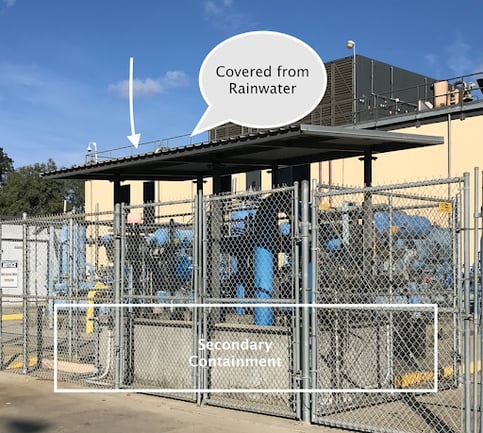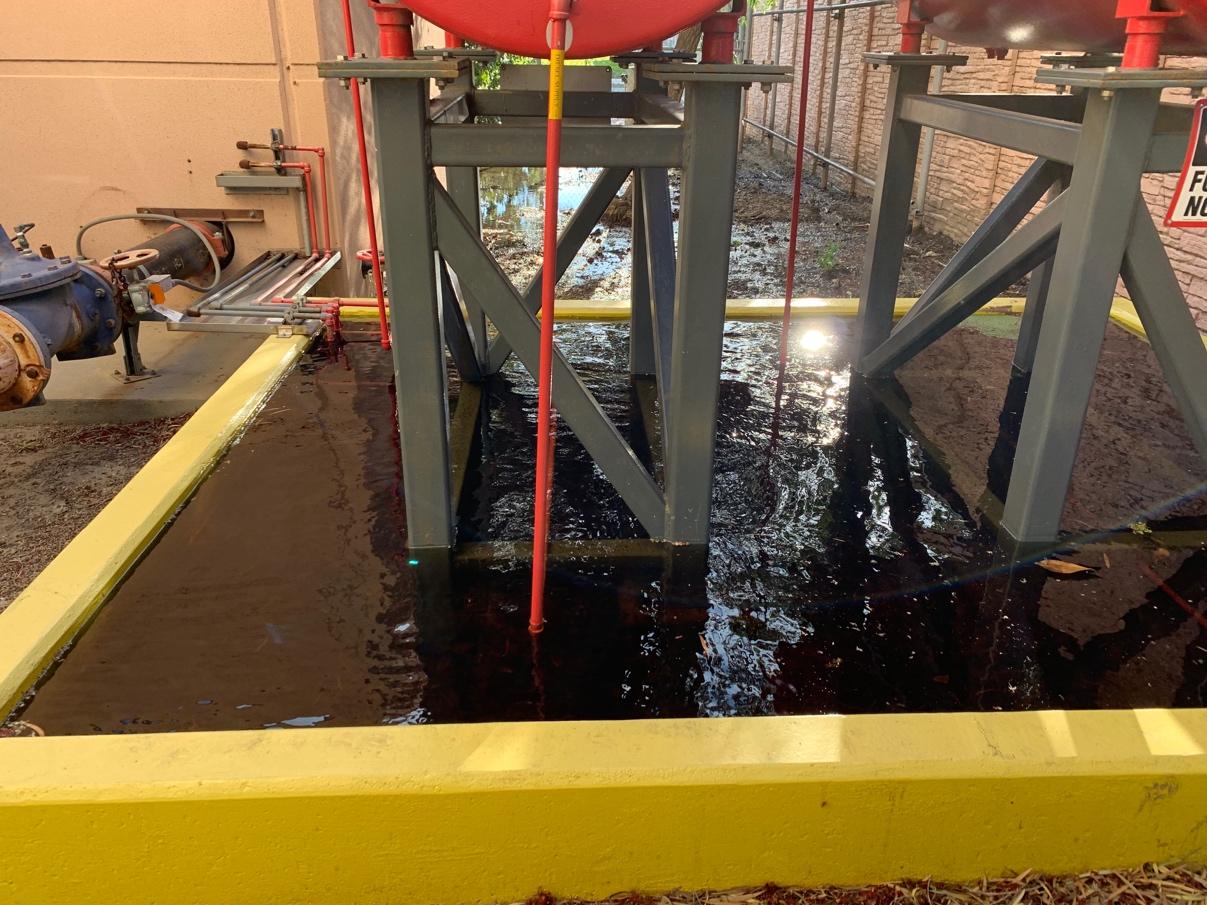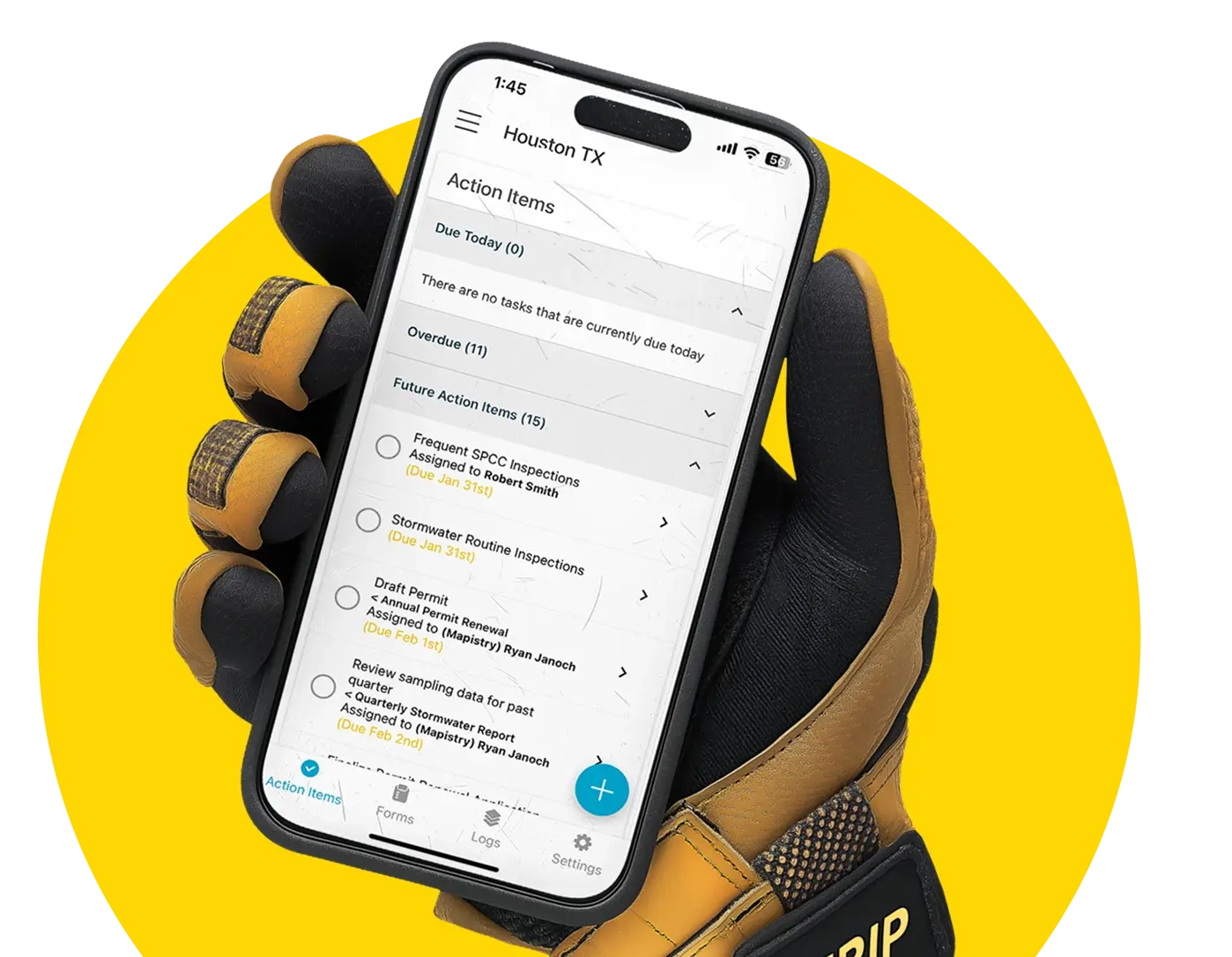SPCC Secondary Containment: Rainwater Overload
Does this look like one of the secondary containment areas you have on-site?
Have you ever wondered what to do with rainwater that accumulates in your containment? If so, you came to the right place!
As we know and can see rainwater will collect in uncovered secondary containments. Rainwater waste that collects within secondary containment must be removed regularly so that it does not reduce the capacity of the secondary container to contain potential pollutants that may subsequently be spilled within.
Everyone knows a secondary containment’s purpose of living is to contain any spilled oil, and pollutants from reaching navigable waters. A secondary containment system that is filled with rainwater is going to be useless for the purposes of containment.
Thus, secondary containment systems have to be protected from the elements – fire, earth, water, wind, lightning. Well for the purposes of this article, I am mostly concern about water – (precipitation and snowfall). Generally, if your containment system is outside it should be kept underneath a cover.

Secondary containments are designed to capture the largest entire volume of the largest container and local precipitation conditions (rainfall and/or snowfall); however, if you’re like us in California we had a WET WINTER.
Leaving rainwater to accumulate in your secondary containment for more time than is reasonably necessary after a rainfall event may leave you at risk for being out of compliance. This rainfall waste accumulation, rainfall event after a rainfall event, after a rainfall event, will reduce the capacity of your containment structure and therefore limits its effectiveness.
I have so much rainwater in my secondary containment; what can I do with it now? I'M SO GLAD YOU ASKED!
Accumulated rainwater or sprinkler flow water may only be released from a secondary containment system after it has been determined to be uncontaminated.
This brings me to my simple 4 step checklist.
Step 1 –Oil/Petroleum Check: Visually check for oil or a petroleum sheen on the surface of the water.
Step 2 –Acids/Alkalis: Use a pH test kit (pH strips or pH meter) to ensure water has a pH of between 6.0 and 8.5.
Step 3 –TSS/Floating solids: Visually check for floatable debris, trash, leaves, objects, pulp, dirt etc.
Step 4 –Odor/Abnormalities: Visually check for an odor, abnormal color, foaming, cloudiness, or other evidence of chemical contamination.
If you noticed any of the above, then the rainwater waste (polluted rainwater waste) must not be discharged onto the ground or into a storm drain.
If there is oil in the water, this oil/water mixture will need to be removed and disposed of as Hazardous Waste.
If you answered “No” for all of the above checklists (unpolluted rainwater waste) can then be discharged to the ground or to a storm drain.
*Note: Some counties reserve the right to make a final determination on whether rainwater waste is polluted or not. Please check with your local agencies before discharging. OKAY, I LIED.
Let's not forget Step 5 – any rainwater release from your berm must be recorded and kept on file.
To log a release from your secondary containment, head to your Records panel in Mapistry and under SPCC: Bermed Release Form, click on “Add New Inspection”.
It will then bring you to a window to log where you describe the tank area, time you started discharging/disposing of your rainwater, the time you finished, and whether a presence of oil or sheen exists.
Once those fields are complete, you’re done! Simple as that –4 err 5 easy steps!



%201%20(2).png)
.png)
.svg)

